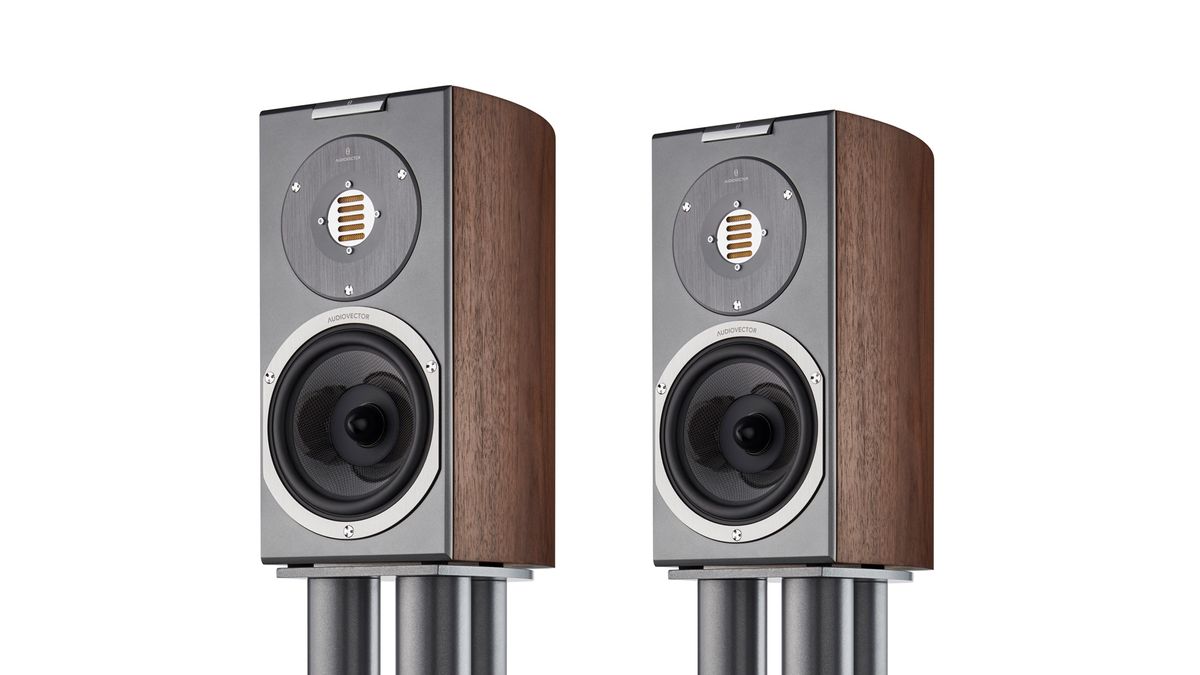What Hi-Fi? Verdict
These Audiovector R1 Arretés are a brilliant choice if you’re after a top quality standmounter to work in a smaller space
Pros
- +
Musically cohesive
- +
Expressive dynamics
- +
Fine build and finish
Cons
- -
Tough competition
Why you can trust What Hi-Fi?
There are some great high-end speakers on the market, but most of them need larger rooms to shine. So, what if you have a generous budget, but a compact listening space? We think we’ve found the answer in Audiovector’s R1 Arreté.
Audiovector is different from most rivals in that it offers upgradable speakers. The entry-level R1 is called the Signature (£2300) and it features a good quality dome tweeter and a carbon coned mid/bass driver all housed in a neat, nicely made, curved cabinet.
When the itch for something better strikes – human nature dictates that it usually does – the speakers can be returned to the factory for conversion to either the Avantgarde (£3850) or the range-topping Arreté spec we have here. The changes are wholesale, involving better drive units, higher-spec crossovers and even improvements to the cabinet, depending on the level chosen.
The cost of the changes totals the difference in retail price between the spec levels, plus a little extra that covers shipping and labour. We don’t know of another speaker manufacturer that offers such a service.
It’s a great idea but it only makes sense if each pricier version of the model outperforms the one below it. Also, each step has to be capable enough at its price point, so that if you buy in at the mid or top end of the range you still get a highly competitive product. That’s a tough ask, but we’ve learnt over the years that Audiovector is good at what it does.
Build
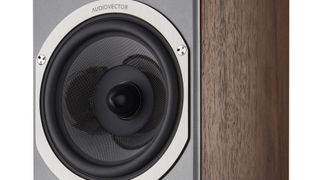
The Arreté specification represents the pinnacle of Audiovector’s technology. It features an open-backed version of the company’s in-house AMT (Air Motion Transformer) tweeter. This is hand-built and is claimed to offer greater agility and detail than conventional dome alternatives.
The rearward sound radiation from the diaphragm is allowed to escape through a vent in the back of the cabinet, helping with dynamics, detail and sense of sonic space in the soundstage.
This vent is positioned just above the reflex port for the 16.5cm carbon fibre mid/bass unit. The carbon fibre cone mixes aramid fibres with artificial wood resin to create a well-damped but rigid structure. The claim is of improved resolution and dynamics over alternatives.
A carefully calibrated crossover network links the two drivers. As expected, it’s packed full of high-quality components, but here the company’s engineers have gone further than most. That crossover is cryogenically frozen down to -238ºC in a process intended to relieve internal stresses in the copper conductors and reduce resistance. The sonic benefits should include improved clarity and resolution.
Look carefully and you’ll see many examples of the company’s attention to detail. For example, the classy single-wire speaker terminals are mounted on a carbon fibre plate rather than a metal one to avoid any unwanted electromagnetic interaction with the crossover components.
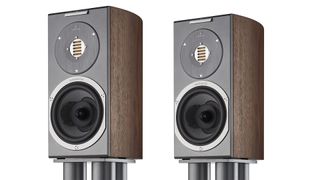
The AMT tweeter’s grille and faceplate are shaped to help dispersion and then there’s the grounding connection, just above the speaker terminals. This is connected to the drive unit chassis to get rid of any unwanted currents flowing in the structure.
Audiovector has given this the rather grand title of Freedom Grounding and can supply a lead to connect the speakers directly to the earth in the house mains – neutral and live from the mains aren’t connected in any way. The lead isn’t cheap though, coming in at a hefty £650.
While that’s a lot of money for a bit of cable, we’re in no doubt about the positive effect on sound quality. The speakers sound cleaner, more expressive and better focused with the cable. We would consider its purchase mandatory if you want to get the best out of the R1s.
The finish on our R1 Arreté review samples is lovely and shows all the attention to detail we would expect at this price. There are four standard options – Italian walnut, black ash, African rosewood and white silk. There are also a variety of custom finish options available for a reasonable £250 extra.
Compatibility
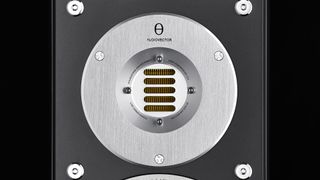
Any speaker at this level needs to be partnered with a top quality system. We use an Audio Research CD9 SE CD player and Roksan Xerxes/Artemiz/van den Hul Frog record player as sources, with a Nagra PL-P preamp driving Gamut’s D200i power amplifier for much of the test. We also plug in an old Naim NAC72/Nap 160 power amp and 25W per channel Cyrus One integrated to see how the speakers react to more characterful (and less muscular) signal feeds.
Given the speaker’s middling 87dB/W/m sensitivity the Cyrus does pretty well, but it doesn’t take long to realise that the Audiovectors have a lot more to give.
We position them a little out into the room with a slight angle towards the listening position. It pays to experiment with small changes in the toe-in angle. Get it right and you’ll get an impressively wide sound stage with precisely located sounds and instruments. The sense of depth is palpable with suitable recordings too.
Sound
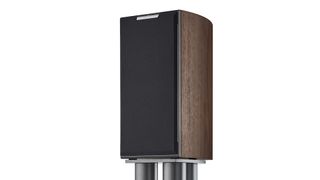
Stravinsky’s The Rite Of Spring is a stern test and the R1 Arretés respond with enthusiasm. They may be small in stature but their sound lacks surprisingly little when it comes to scale and authority.
It really is impressive just how bold and confident these speakers are when challenged with the music’s savage dynamics and dense instrumentation. The R1s stay composed even when pushed hard and barely harden-up in such circumstances.
Detail levels are as high as the price point demands, but the Audiovector’s musically cohesive way of assembling all that information really impresses. These are the kind of speakers that allow you to analyse the production of a recording if you want to, but they’d rather you step back and enjoy the musical experience.
When we listen to this Stravinsky piece we’re wrapped up in the musical drama rather than wondering about the mechanics of the recording. That’s just as it should be in our view.
Audiovector has done a good job with the tonality of these boxes. A lot of small speakers sound insubstantial, but these R1s have an unexpectedly weighty presentation thanks to the agile yet surprisingly muscular bass-end. We have them on solid stands, out into the room, and at no point do we feel that they need the additional reinforcement of a rear wall.
We switch to Lauryn Hill’s debut album The Miseducation Of… and the R1s sound at home. They deliver rhythms effortlessly and tie all the musical strands together brilliantly. This is a complete performance. It’s expressive and exciting while delivering Hill’s superb vocals on Doo Wop (That Thing) with all the passion and drive they deserve. There’s a thick layer of sophistication here that screams high-end hi-fi, but also a huge dose of fun that many high-priced rivals ignore.
Verdict
There’s no shortage of excellent rivals at this price level. KEF’s Reference 1s sound even more authoritative and are capable of greater tonal neutrality. Equally, Bowers & Wilkins 805 D3s have a sweeter top-end coupled to an impressive degree of resolution while Dynaudio’s Contour 20s take a more muscular approach.
Yet, even against such talented (and larger) competition, we think these Audiovectors posses an utterly convincing blend of talents, particularly their musical cohesion, expressive dynamics and rhythmic nature. If you have a smaller listening room, we would argue they deserve top spot on your shortlist.
SCORES
- Sound 5
- Compatibility 4
- Build 5
MORE:
Read our KEF Reference 1 review
Read our Bowers & Wilkins 805 D3 review
Read our Dynaudio Contour 20 review
What Hi-Fi?, founded in 1976, is the world's leading independent guide to buying and owning hi-fi and home entertainment products. Our comprehensive tests help you buy the very best for your money, with our advice sections giving you step-by-step information on how to get even more from your music and movies. Everything is tested by our dedicated team of in-house reviewers in our custom-built test rooms in London, Reading and Bath. Our coveted five-star rating and Awards are recognised all over the world as the ultimate seal of approval, so you can buy with absolute confidence.
